I just thought I update you on how my ‘potatoes grown in straw‘ experiment is going.
Right now, my Red Norland potatoes that I planted on May 19th are just beginning to bloom. That would be eight weeks from planting. (This, by the way, is a crucial time to keep your potatoes regularly watered to get large, scab-free potatoes – read more about that in this article.)
One cool thing about this style of growing potatoes is that you can easily check on the progress of the tubers forming underground (or rather, understraw). I was curious to know just how big my little potatoes were at this point, so I carefully pulled away the straw at the base of the plant. And lo, and behold…
There it was. A tiny little potato not much bigger than a large pea.
So I learned/confirmed a few things today.
#1. Flowers on plants = formation of little spuds
#2. Potatoes grown in straw are going to be wonderfully clean
#3. I won’t be eating baby potatoes for at least a couple of weeks.
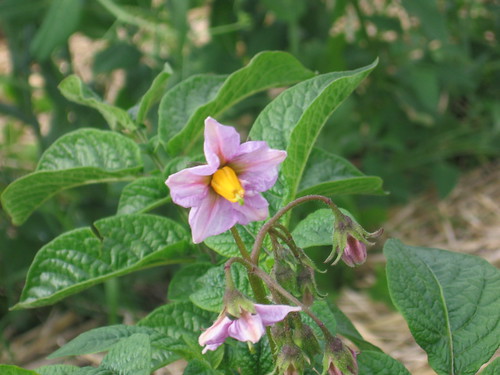
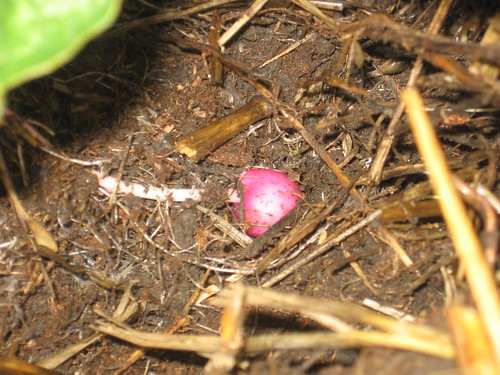
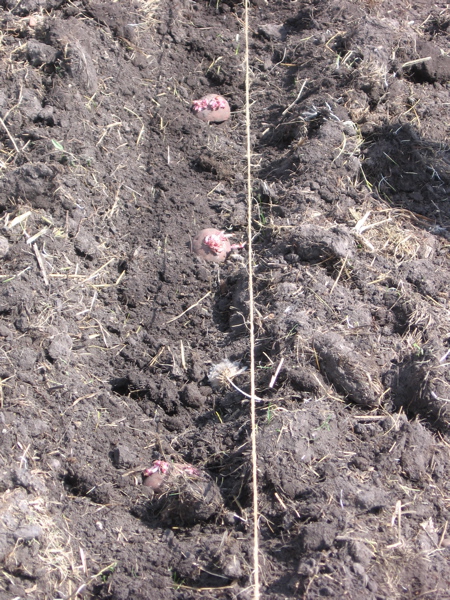

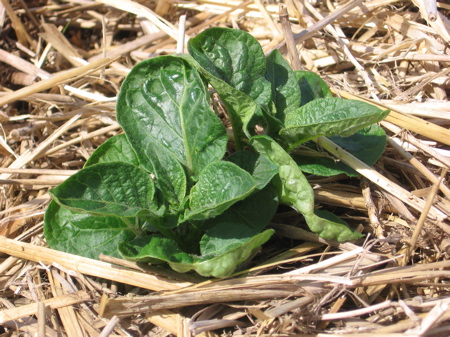
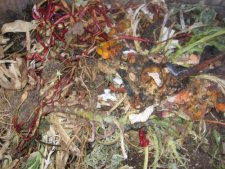 Who knew that throwing all your dead plants, moldy vegetables, and manure from your pet pig in a big pile to let them rot, and then growing your own food in that stuff would be a great idea? Go figure, eh? But that pile of mushy tomatoes and wilty carrots is one of the best things you can do for your garden. Full of the very things your plants need to thrive, compost is a gardener’s black gold.That’s why I decided I needed a compost pile. After all, I had the space, I had the ingredients, and I had the motive – why not make my own compost? After all, how hard could it be?
Who knew that throwing all your dead plants, moldy vegetables, and manure from your pet pig in a big pile to let them rot, and then growing your own food in that stuff would be a great idea? Go figure, eh? But that pile of mushy tomatoes and wilty carrots is one of the best things you can do for your garden. Full of the very things your plants need to thrive, compost is a gardener’s black gold.That’s why I decided I needed a compost pile. After all, I had the space, I had the ingredients, and I had the motive – why not make my own compost? After all, how hard could it be?